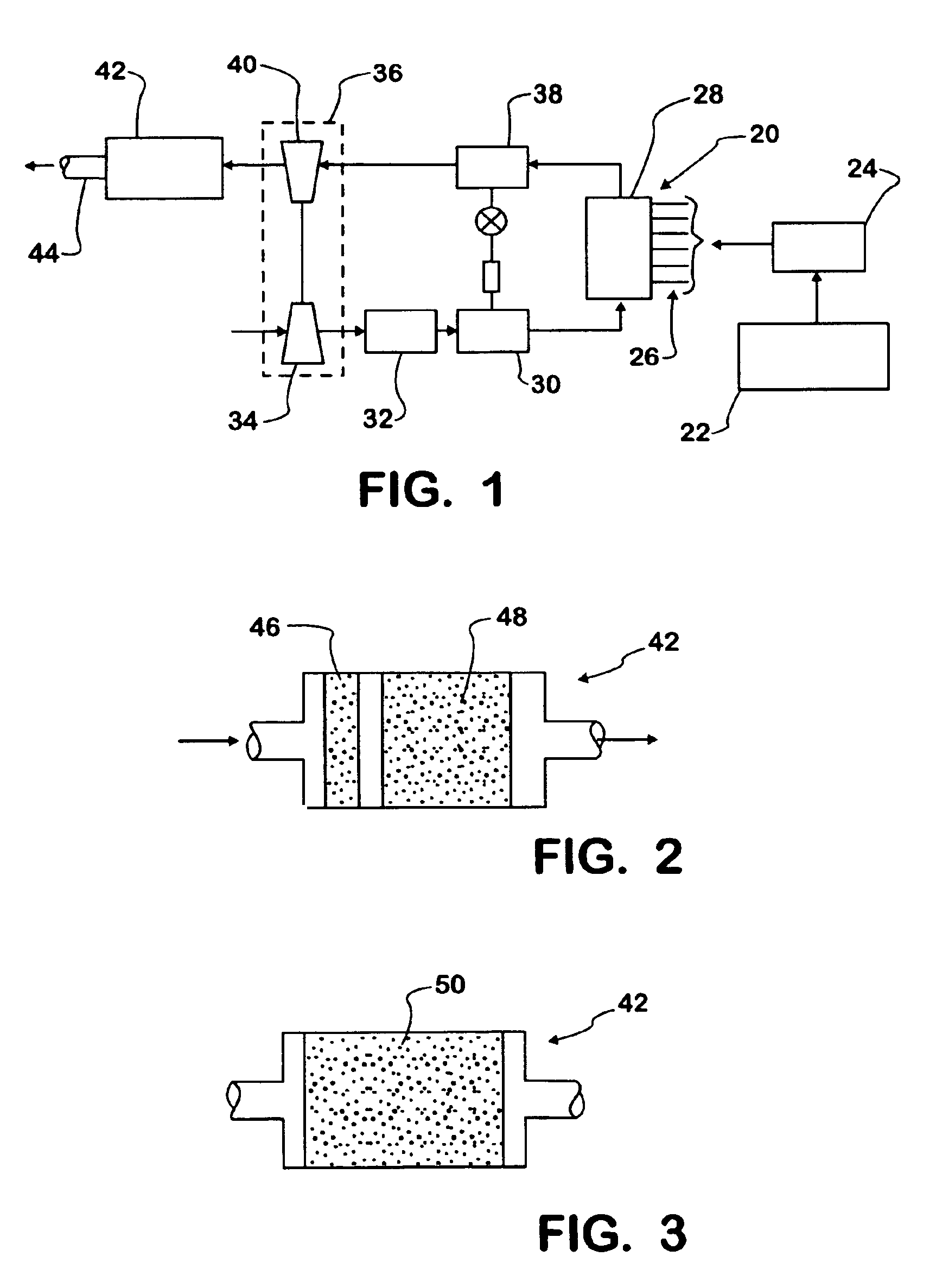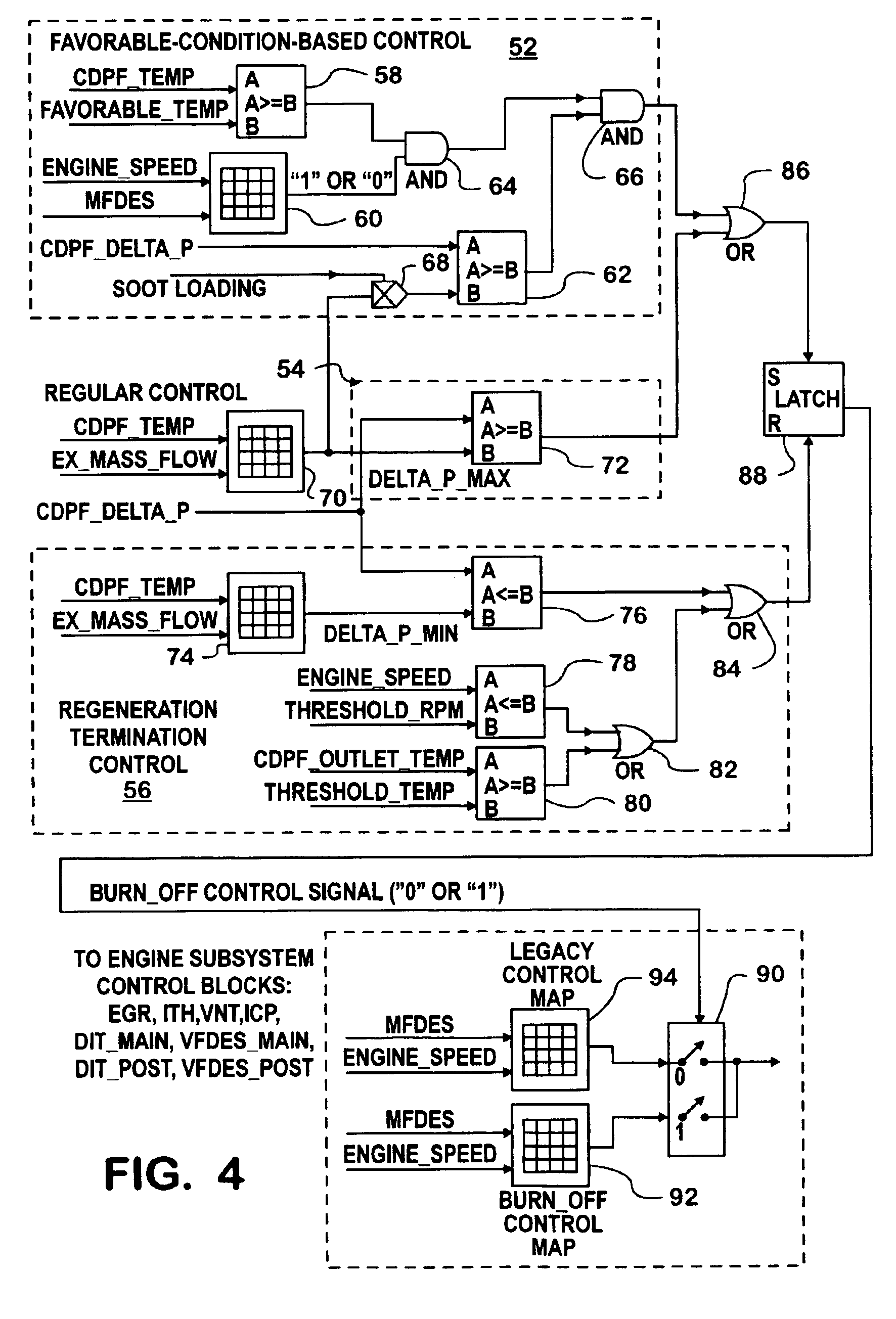Soot burn-off control strategy for a catalyzed diesel particulate filter
a technology of diesel particulate filter and burn-off control, which is applied in the direction of electrical control, exhaust treatment electric control, separation process, etc., can solve the problems of osub>2/sub>more difficult to treat diesel engine exhaust without, and increase the cost of the exhaust treatment system
- Summary
- Abstract
- Description
- Claims
- Application Information
AI Technical Summary
Benefits of technology
Problems solved by technology
Method used
Image
Examples
Embodiment Construction
[0025]FIG. 1 shows a schematic diagram of an exemplary diesel engine 20 for powering a motor vehicle. Engine 20 has a processor-based engine control system 22 that processes data from various sources to develop various control data for controlling various aspects of engine operation. The data processed by control system 22 may originate at external sources, such as sensors, and / or be generated internally.
[0026]Control system 22 includes an injector driver module 24 for controlling the operation of electric-actuated fuel injectors 26 that inject fuel into combustion chambers in the engine cylinder block 28. A respective fuel injector 26 is associated with each cylinder and comprises a body that is mounted on the engine and has a nozzle through which fuel is injected into the corresponding engine cylinder. A processor of engine control system 22 can process data sufficiently fast to calculate, in real time, the timing and duration of injector actuation to set both the timing and the a...
PUM
 Login to View More
Login to View More Abstract
Description
Claims
Application Information
 Login to View More
Login to View More - R&D
- Intellectual Property
- Life Sciences
- Materials
- Tech Scout
- Unparalleled Data Quality
- Higher Quality Content
- 60% Fewer Hallucinations
Browse by: Latest US Patents, China's latest patents, Technical Efficacy Thesaurus, Application Domain, Technology Topic, Popular Technical Reports.
© 2025 PatSnap. All rights reserved.Legal|Privacy policy|Modern Slavery Act Transparency Statement|Sitemap|About US| Contact US: help@patsnap.com



